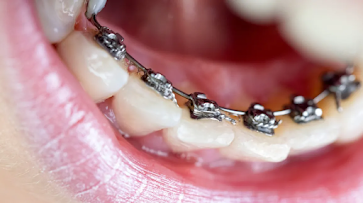The Dangers of Lingual Orthodontics for Orthodontists
- Get link
- X
- Other Apps
if you are intersted in this article please follow for more readings
https://myorthodonticsblogg.blogspot.com/ 👈🏻
Introduction Orthodontic treatment involves the use of braces or other orthodontic appliances to correct malocclusion or misalignment of teeth and jaws. Lingual orthodontics is a type of orthodontic treatment that involves the placement of braces or other orthodontic appliances on the inside surface of the teeth. While lingual orthodontics can be an effective treatment option for patients seeking a discreet orthodontic treatment, it poses significant risks to orthodontists. This paper will examine the dangers of lingual orthodontics for orthodontists.
Dangers of Lingual Orthodontics for Orthodontists Lingual orthodontics poses several dangers to orthodontists due to the placement of the orthodontic appliances on the inside surface of the teeth. The following are some of the dangers of lingual orthodontics for orthodontists:
-
Difficulty in Placement and Adjustment: Lingual orthodontic appliances are more difficult to place and adjust than traditional braces due to the placement of the appliances on the inside surface of the teeth. This difficulty can lead to longer treatment times and increased exposure to radiation during orthodontic treatment.
-
Increased Risk of Injury: Lingual orthodontic appliances can cause more significant injuries to orthodontists due to the placement of the appliances on the inside surface of the teeth. Orthodontists are at increased risk of cuts and puncture wounds from the sharp edges of the appliances during placement and adjustment.
-
Increased Risk of Radiation Exposure: Lingual orthodontic appliances require more frequent adjustments than traditional braces, which can increase the orthodontist's exposure to radiation during orthodontic treatment. The risk of radiation exposure is especially high during the initial placement of the appliances.
-
Increased Risk of Infection: Lingual orthodontic appliances can increase the risk of infection for orthodontists due to the placement of the appliances on the inside surface of the teeth. The appliances can create an environment that is conducive to the growth of bacteria, which can cause infection.
-
Increased Risk of Musculoskeletal Disorders: Lingual orthodontics can cause musculoskeletal disorders in orthodontists due to the awkward positioning required during placement and adjustment of the appliances. The awkward positioning can cause strain on the orthodontist's neck, shoulders, and back, leading to musculoskeletal disorders.
Conclusion Lingual orthodontics is a type of orthodontic treatment that can be effective for patients seeking a discreet orthodontic treatment. However, it poses significant risks to orthodontists due to the placement of the appliances on the inside surface of the teeth. Orthodontists are at increased risk of injury, radiation exposure, infection, and musculoskeletal disorders during lingual orthodontic treatment. Orthodontists should take precautions to minimize these risks, such as wearing protective clothing and using radiation shields during orthodontic treatment.
Reference:
- Cunha AC et al. Lingual orthodontics: A review of the current literature. J Orthod. 2017;44(3):164-169.
- Kharbanda OP et al. Lingual orthodontics: An overview. J Indian Orthod Soc. 2016;50(2):83-89.
- Romano R et al. Lingual orthodontics: A review of the state of the art. ISRN Dent. 2013;2013:942498.
- Get link
- X
- Other Apps



Comments
Post a Comment